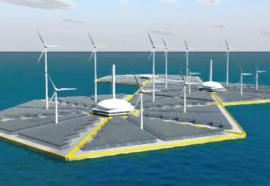Energy Storage Solutions
Barriers and breakthroughs to a smarter grid.
Technology is quickly making energy storage more economical and effective than ever before. But companies that wish to invest in storage capacity face a journey through a frustrating regulatory no-man’s land. Opening the gateway for storage to deliver smart grid benefits will require a more streamlined and coherent approach to regulating storage as utility infrastructure.










